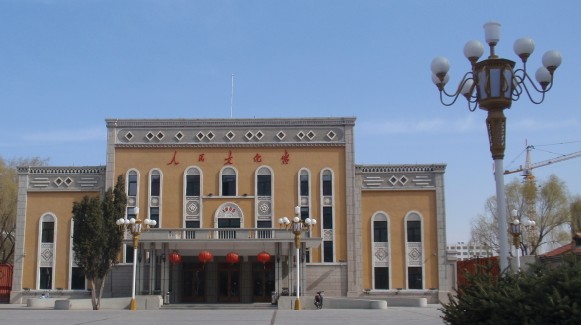 |
|
The People’s Cultural Palace.
|
Mass Participation
A group of elders perform a folk opera while in another room children rehearse a dance. Despite the chill of the winter day outside, scenes inside the People’s Cultural Palace of Tailai County are ebullient.
“It is great to get together with people of my age. Dancing can dispel all fatigue from a day’s work,” said Ms. Zhao who is a member of the county’s Golden Age Troupe for senior amateur artists. Before joining the troupe in 2012, her life as a retiree consisted of nothing more than cleaning, cooking and watching TV. “Now my teammates and I dance together and chat, sharing our thoughts and joys.” The troupe has grown from 20 members to 300-plus and meets regularly, even in the bone-biting cold of winter in Northeast China.
According to Tailai magistrate Li Yansong, there are more cultural facilities for public activities in the county, a result of increasing financial and policy incentives for cultural undertakings. They include nine urban plazas that total 200,000 square meters and a cultural and sports center that includes a stadium, a theater, a library and an exhibition space.
“The broad masses should play the leading role in the progress of Tailai’s cultural sector,” commented Li Yansong. To kindle the public’s interest in cultural activities and encourage their participation, the county has, with the backing of the local government, founded 25 cultural organizations with a membership topping 3,000. They include the calligraphers’ association, the dancers’ association, a community art troupe and a Yangge dance (a collective folk dance) team for senior citizens. These organizations draw on local events and native culture for their repertoire, and offer regular performances and exhibitions in neighborhoods, schools and factories in both rural and urban areas. Many have bifurcated into sub-associations. For instance, the literature associations now have five branches on poetry, painting and other subjects. One poetry branch alone consists of 158 clubs under it, thanks to the traditional penchant for the art in the region.
It is a long-held mission of the Chinese government at all levels to close the urban-rural divide, which is found not only in economic but also cultural development. In 2007 Tailai set the goal of cultivating “cultured farmers and a culturally advanced countryside.” It has since funded 200-odd musical instruments or other provisions for rural residents and supported the establishment of 60 or more farmers’ art groups who give free performances to fellow villagers in the slack season and at festivals.
The county government also sponsored a rural library scheme aimed to promote agricultural science and technology among rural residents. On the day this reporter visited one such library in Jieji Village, a score of farmers were in the reading room. One of them, who was poring over a booklet on how to grow high-yield vegetables, said, “It is good to do some reading here during the slack season as books enrich my knowledge and broaden my vision. It also helps me prepare for the farm work next spring.”
There are at present 83 village libraries across the county with a total collection exceeding 200,000 books and daily average visits above 2,000.
The varied cultural activities in Tailai have injected vigor in both urban and rural communities, lifting local morale and improving people’s quality of life as well.
We Recommend:
